by Editor | Jul 22, 2013 | Accomodations, New Articles, Restaurants
Article and photos by Josette King
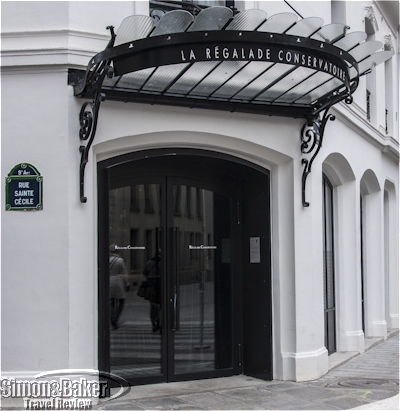
The main entrance of La Régalade
In a city that boasts more than its fair share of venerable grande dame properties, it’s luxury boutique hotels that have been creating a buzz in Paris in recent years. And few have buzzed louder than the recently opened five star Hotel de Nell. What I enjoyed most about my recent visit there was, well, everything! The location first of all, in the heart of the tony 9th arrondissement, a Right Bank neighborhood of understated side streets lined with elegant balconied buildings of quarry stone, just north of the Grands Boulevards on the way to Montmartre. Although mainly overlooked by tourists, the quietly chic 9th has been a hub of Parisian intellectual and artistic life for more than two centuries, and retains to this day its 19th century atmosphere.
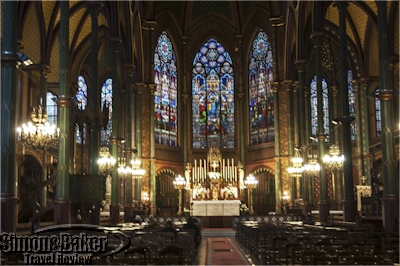
The neo-gothic Church of Saint Eugène and Sainte Cecile
One block down the street from the Hotel de Nell is the Conservatoire (music and dance academy founded in 1795) where Paris was first introduced to the music of Ludwig van Beethoven in 1828, and Hector Berlioz premiered his Symphonie Fantastique two years later. Around the corner, is the church of Saint Eugène et Sainte Cécile (Jules Verne was married there), a unique 19th century neo-gothic church, the first in Paris with its interior entirely metallic. The legendary Folies Bergères cabaret, with its 1930 Art Déco façade recently returned to its original gilded splendor, is one street over. And the place where George Sand and Frederic Chopin once lived (in separate apartments across from each other) is just a short walk away.
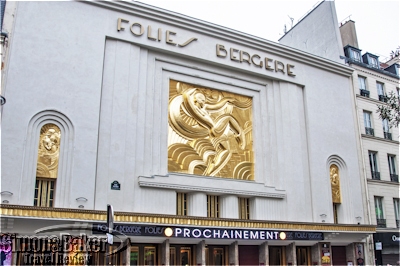
The newly restored façade of the Folies Bergères cabaret
I thoroughly enjoyed my leisurely exploration of the neighborhood. And I loved even more returning home to the serene luxury of the Hotel de Nell after my forays back in time to Paris’ Belle Epoque. Behind its impeccably restored 19th century façade with its lacy wrap-around wrought iron balconies, noted architect and designer Jean-Michel Vilmotte created a tranquil minimalist retreat that brilliantly combined mid-20th century-inspired furnishings with oriental details. The resulting Zen-like atmosphere permeated every corner of the property. But nowhere was it more in evidence than in my light-filled fifth story room with its romantic view of the neighborhood rooftops and its stunning bathroom with a white marble Japanese-style soaking tub and shoji screen-like unpolished glass windows.
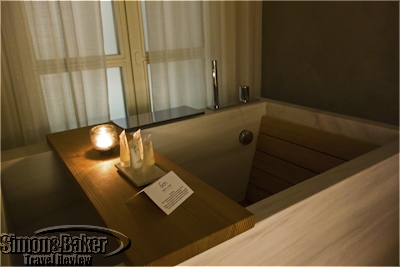
A votive candle cast a soft glow on the bathroom
Then on the street floor, there was La Régalade, one of Paris’ hot new bistros. Here Bruno Doucet, one of the city’s leading young chefs, dished out a cuisine that has become so popular in recent years that a new word had to be invented for it: bistronomy. This is where gastronomy, and the skills Chef Doucet honed in the kitchens of Pierre Gagnaire and Jean-Pierre Vitago, is translated into simpler yet imaginative, more convivial bistro fare offered as a friendly three-course prix fixe formula. Small wonder that whether for lunch or dinner, reservations were strongly recommended during the week and definitely necessary on weekends.
by Editor | Jun 10, 2013 | Accomodations, New Articles
By Elena del Valle
Photos by Gary Cox
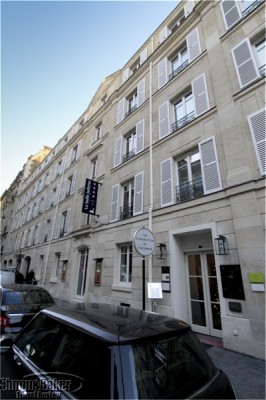
Hotel and Spa La Belle Juliette
The Hotel & Spa La Belle Juliette sits on a quiet street in the Latin Quarter of Paris, France. It’s conveniently located within one of the city’s most desirable neighborhoods. That alone would have attracted us for a look. There was much more to the hotel. Electronic and luxury amenities, gourmet treats, custom fragrance samples, bespoke decor, a size appropriate spa with plunge pool, attentive service, and English speaking staff were among the features we liked.
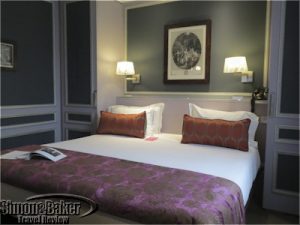
Decor on each floor represented a period in Julliette’s life.
Our small rooms were pretty and stylish with modern amenities, handsome bathrooms, individual temperature controls and room service. The hotel’s common areas and the rooms followed a decorative theme focused on the life of Juliette Recamier, a historic figure popular in her day.

The breakfast area con the ground floor
Friendly youthful staff spoke English and appeared eager to help. The basement level small spa was worth a visit with a steam room, unisex changing room with shower, treatment room and a color light filled plunge pool. The single spa treatment I had was outstanding.
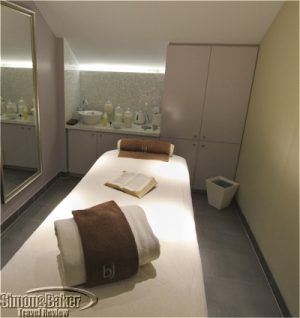
The tidy spa downstairs was an unexpected bonus
Breakfast choices though few were good. I especially liked the rich hot chocolate and the deli platter which while not inexpensive was large and delicious. This jewel of a property was the real deal and would draw us back in the future.
by Editor | Apr 22, 2013 | Accomodations, Attractions, Ecotourism, New Articles
Article and photographs by Chester Godsy and Joni Johnson-Godsy
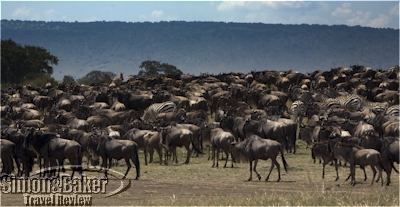
Wildebeest and zebra gathered for the river crossing
Our first visit to Kenya coincided with the well known wildebeest migration. We were delighted to have an opportunity to spend a full day watching the animals gathering on the northern side of the Mara River, preparing to cross into the southern portion of the Maasai Mara Reserve during our stay at Elephant Pepper Camp. Part of the Cheli & Peacock portfolio, the nine-tent 160-hectare property offered a perfect combination of camping luxury in an intimate setting with the backdrop of classic Africa.

Our tent at Elephant Pepper Camp
by Editor | Apr 8, 2013 | Accomodations, Restaurants
By Elena del Valle
Photos by Gary Cox
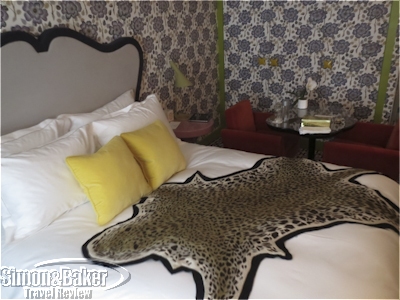
Room decor at Thoumieux featured a variety of patterns and fabrics
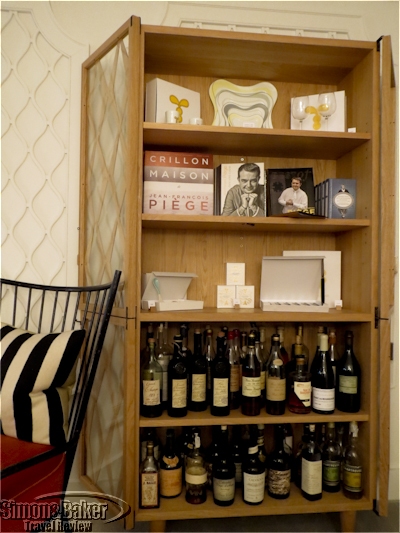
The lobby of the hotel doubled as the restaurant lounge
We liked Thoumieux, a 15-room boutique hotel in Paris, France, for its elegant yet comfort oriented features and electronic amenities, its location in the seventh arrondisement and its gourmet restaurant.
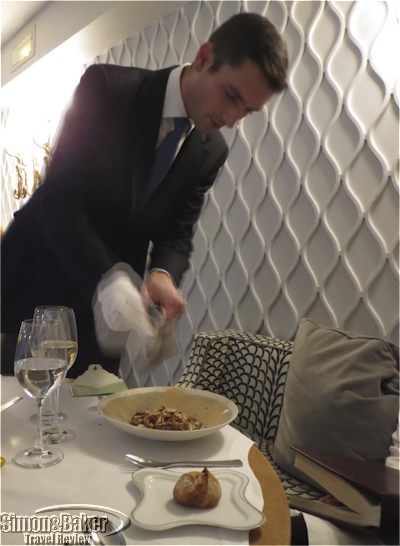
Fresh white truffles were in season and featured on the menu
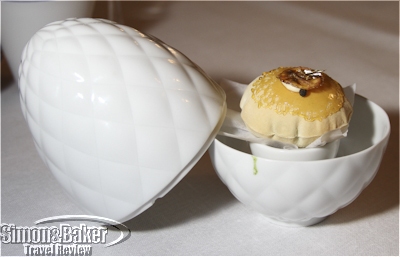
Jean-Francois Piege presentation featured unique china for many courses
Restaurant Jean-Francois Piege, the hotel’s gourmet venue named for the eponymous chef owner, on the lobby level, offered fine dining in a cozy setting. Serving beautifully presented and unique dishes prepared in a modern French cuisine style the restaurant, like the hotel, was small with seating for only 18 guests. It was sold out the day we had lunch.
by Editor | Apr 1, 2013 | Accomodations, New Articles, Restaurants
Article and photos by Josette King

Our terrace had a stunning view of the Amalfi coastline
After decades of saying “some day,” I was finally wending my way along Amalfi Drive. Now officially known as Strada Statale 163, this rapid succession of hairpin turns originally carved by the Romans from the side of towering cliffs rising out of the Tyrrhanian Sea is widely recognized as one of the most spectacular coastal roads in Europe. Each turn revealed more eye-popping scenery. Isolated farmhouses and medieval watchtowers clung to the vertical rock face above, while whitewashed villages tumbled straight down to the sea below. Then on a rare stretch of straight road on the outskirts of Amalfi, an elegant three-story white stone facade appeared at the edge of the cliff. I had arrived at Italy’s version of Eden: the legendary Santa Caterina Hotel.
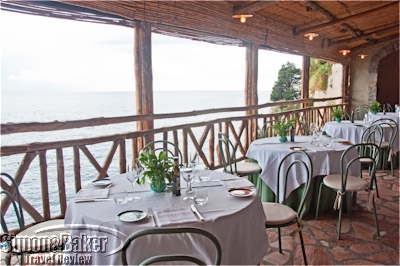
The Al Mare Restaurant terrace
Built into a 60 meters (200 feet) vertical cliff, the century-old property was a sumptuous multi-level complex of terraced citrus groves and lush gardens that started on Almalfi Drive to end with a saltwater swimming pool and private beach at the water’s edge. The hotel had the timeless grace of a classic Mediterranean villa, with light-filled open spaces, vaulted ceilings and arched floor-to-ceiling glass doors opening onto terraces that extended toward the sea. In the common areas as well as in my own suite, pale Majolica tile floors sprinkled with hand-painted flowers, and white walls and ceilings provided an understated background to better showcase the antique furniture and artworks interspersed throughout. But beyond its breathtaking surroundings and exquisite decor, the distinctive charm of the Santa Caterina came from its people, management and staff alike, for whom the property has always been a family affair. Giuseppe Gambardella originally built the villa in 1880, only to see it destroyed by a rock slide a decade later.
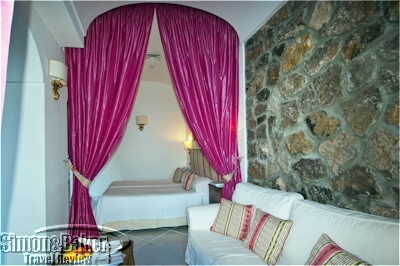
A soaring ceiling enhanced the airy feel of the suite
In 1904, his son Crescenzo personally rebuilt it in a safer location farther up the coast. He included six guest rooms, and the Santa Caterina was born. Fast forward through the 20th century, during which the Gambardella family continuously expanded and enhanced the property to make it the glamorous luxury resort with 66 guest rooms and suites that we enjoy today. Along the way, Crescenzo’s daughters, Giuseppina (Giusi) and Carmella (Ninni) assumed the direction. Now their own children, and more recently grandchildren, hold various positions to carry on the family tradition.
So it is with the staff as well. Many have been at the Santa Caterina for decades, in some cases for two or more generations, an extended part of the Gambardella family, upholding the tradition of flawless service for which the hotel is famous. There is no improvising this unique type of gracious hospitality. It makes me think of the doorman who not only stood with umbrella at the ready, but also profusely apologized for the rain, as though he considered it a personal shortcoming that he had failed to deliver perfect weather every day of my visit.
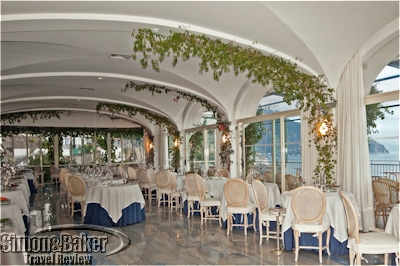
The Santa Caterina Restaurant dining room
The Santa Caterina Restaurant was equally brilliant. Not only did its scenic dining room offer a fabulous view of the old city of Amalfi and the Gulf of Salerno, but it was also one of the best restaurants in town. Whether for lunch or dinner, Chef Domenico Cuomo and his team showcased the excellent traditional cuisine of the area, prepared to order from seasonal ingredients and the latest catch of local fishermen, as well as irresistible home made pasta dishes. There again the service was impeccable: attentive, friendly and precisely paced to ensure a superb dining experience, and a wonderful antidote to the standard tourist fare dished out in abundance all along the coast.
It was a restaurant well worth return visits, even if I didn’t have the good fortune to be a guest at the Santa Caterina; which of course would be most unlikely. Now that I have experienced the unique hospitality of the Gambardella family and staff, I couldn’t imagine staying anywhere else on the Amalfi coast. Rather, I yearn to return to the welcoming embrace of the Santa Caterina as the first opportunity; and yes, it’s nice that the idyllic vistas of the Amalfi coast just happen to be included.
by Editor | Mar 11, 2013 | Accomodations, Attractions, New Articles
Article and photos by Chester Godsy and Joni Johnson-Godsy
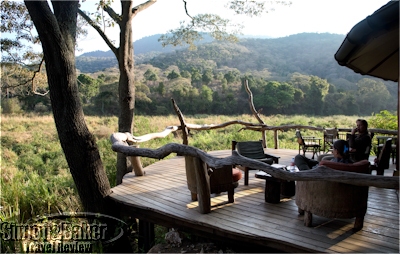
Looking out at the bush from Kitich Camp
In the 1920s, Martin and Osa Johnson traveled from the United States to remote places in Kenya and brought back stories, films and photographs that helped define the American idea of the African safari. Their book entitled I Married Adventure helped peak our curiosity about the mountainous region in Kenya north of Nairobi. It was exciting to imagine that on our trip we were recreating part of their journey nearly one hundred years later.
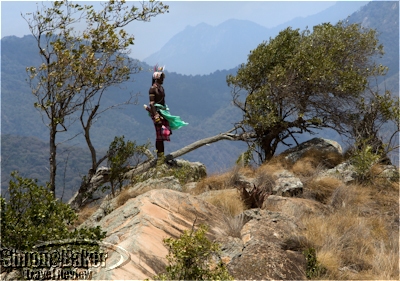
A Samburu warrior in traditional dress
The Samburu people of Northern Kenya live much the way they did back in the days of Martin and Osa Johnson. A Samburu village lies only a couple of miles from Kitich Camp, a walking safari tented camp part of the Cheli & Peacock portfolio, where we stayed on our trip to Kenya. Lamario, one of our guides, took us to this village and helped us bridge the gap between languages and cultures. The Samburu people we met were warm, curious and inviting. Only a few white skinned people had been to the village before us so curiosity was mutual. Visiting this village gave us insights into a time when a community was more important than an individual.

The dining area at Kitich with photos of local Samburu on the walls
A young woman in the village invited us into her home, where we spent time with her and asked her questions about the Samburu lifestyle and culture. We saw the creative ways they live in harsh, arid conditions. We learned about their lives, values and culture. We came away in awe of these people. We had an experience we will treasure for a lifetime.

The pool at Joy’s Camp
From there we made our way southeast to Joy’s Camp, its sister property in the Shaba National Reserve still north of Nairobi. Named for Joy Adamson, a well-known naturalist, artist and author, the camp offered comfortable accommodations dramatic views and good wildlife sightings as well as access to the nearby Samburu National Reserve.

Part of the common areas at Joy’s Camp































